Australia is home to diverse trees, each with unique characteristics. However, just like any living entity, these trees are vulnerable to diseases that can hinder their growth, diminish their beauty, and threaten their existence. Recognizing the early signs of these diseases and understanding their causes is the first step toward safeguarding our natural heritage.
In Australia, trees are susceptible to various diseases, often caused by fungi, bacteria, and pests. Common tree diseases include:
- The Cinnamon Fungus (Phytophthora cinnamomi), which affects a wide range of plants, causing root rot
- Myrtle Rust, which targets plants in the Myrtaceae family presenting as yellow-orange pustules on leaves
- The Eucalyptus Gall Wasp, causing galls on eucalyptus leaves.
Prevention involves regular tree inspections, ensuring good tree hygiene, using resistant plant varieties, and applying appropriate treatments or fungicides.
This article delves into some of the most prevalent tree diseases in Australia, offering insights into their identification and proactive measures for prevention.
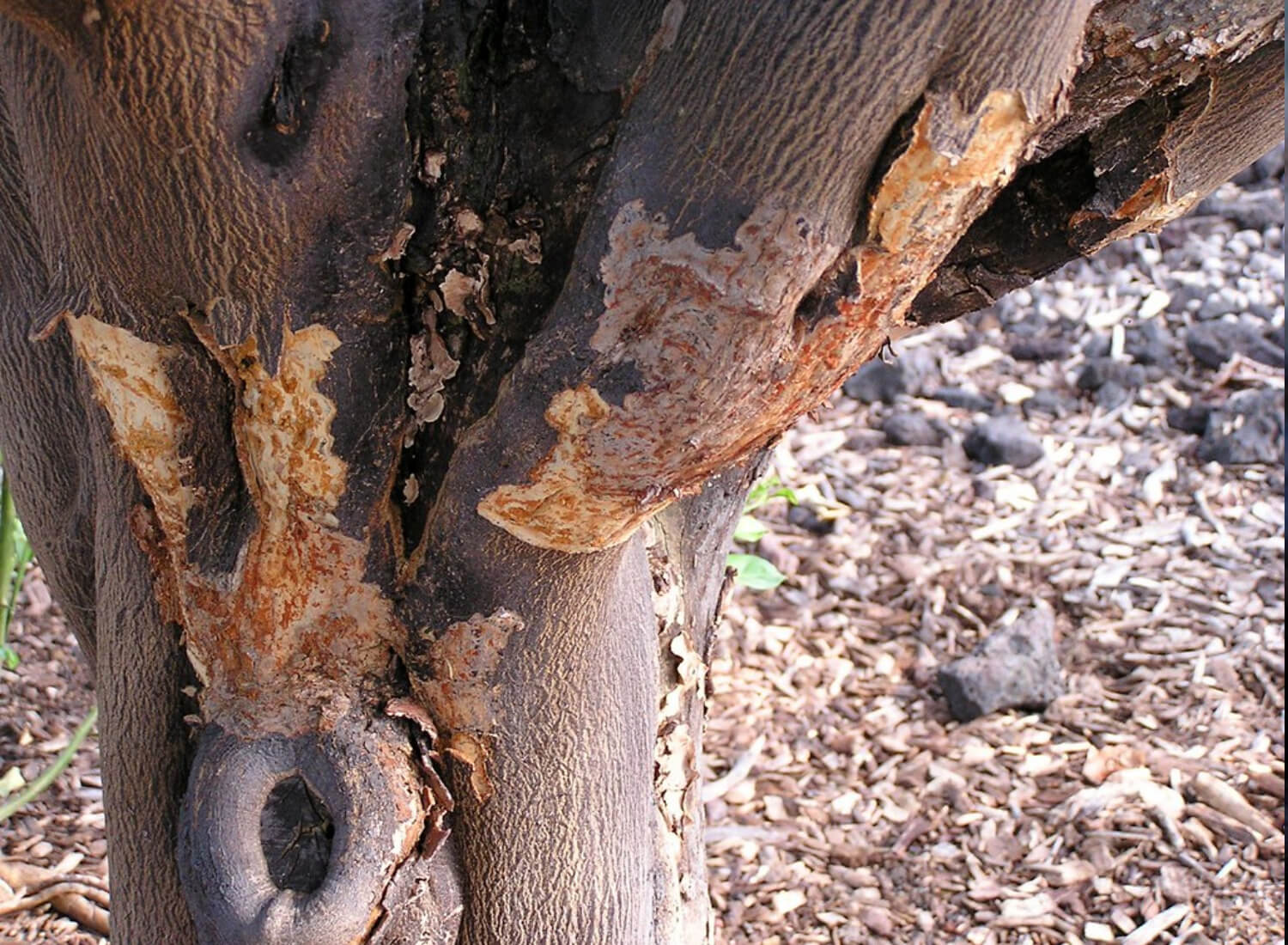
Source: Flickr
Table of contents
ToggleThe systemic nature of diseases
Understanding how diseases affect trees requires a look beyond just the external symptoms. At the heart of many tree diseases lies a systemic issue where the entire tree, from its deep roots to its tallest leaves, is affected. Grasping the systemic nature of diseases allows for better insight into their severity, spread, and overall impact on the tree’s health.
What does systemic mean?
In the context of tree diseases, “systemic” refers to diseases that affect the entire tree rather than just a localised part. Such diseases spread throughout the tree’s internal system, including its vascular system, which comprises the xylem and phloem.
How diseases become systemic
Many systemic diseases enter trees through roots, wounds, or vectors like insects. Once inside, pathogens can travel using the tree’s nutrient transport system, which allows them to spread rapidly and extensively.
Symptoms and detection
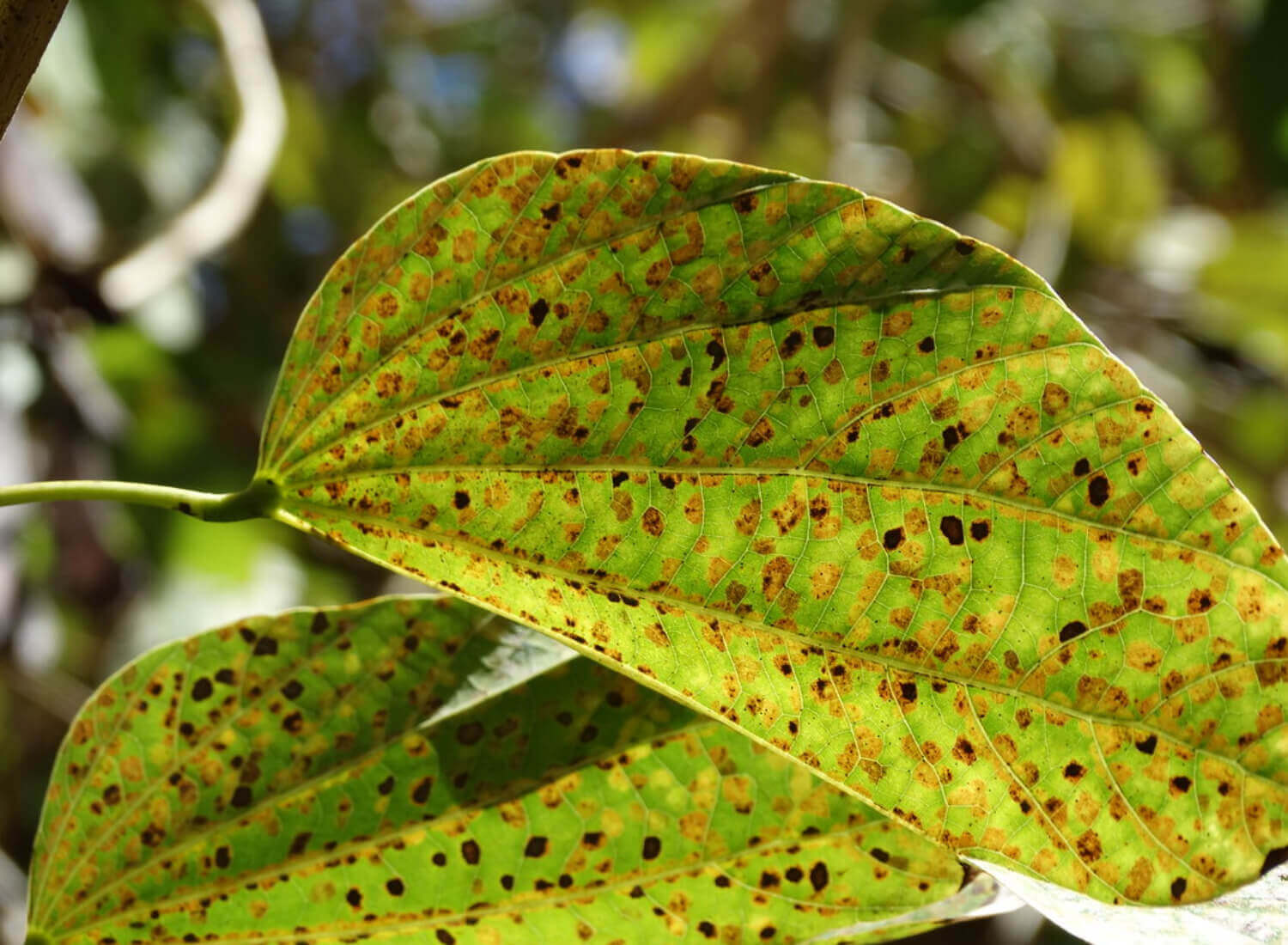
Source: Flickr
Systemic diseases often manifest in multiple ways simultaneously. Symptoms can include wilting, discoloration of leaves, premature leaf drop, dieback of branches, and reduced growth. Since these symptoms can affect the entire tree, early detection becomes challenging, making proactive tree care essential.
Impact on tree vitality
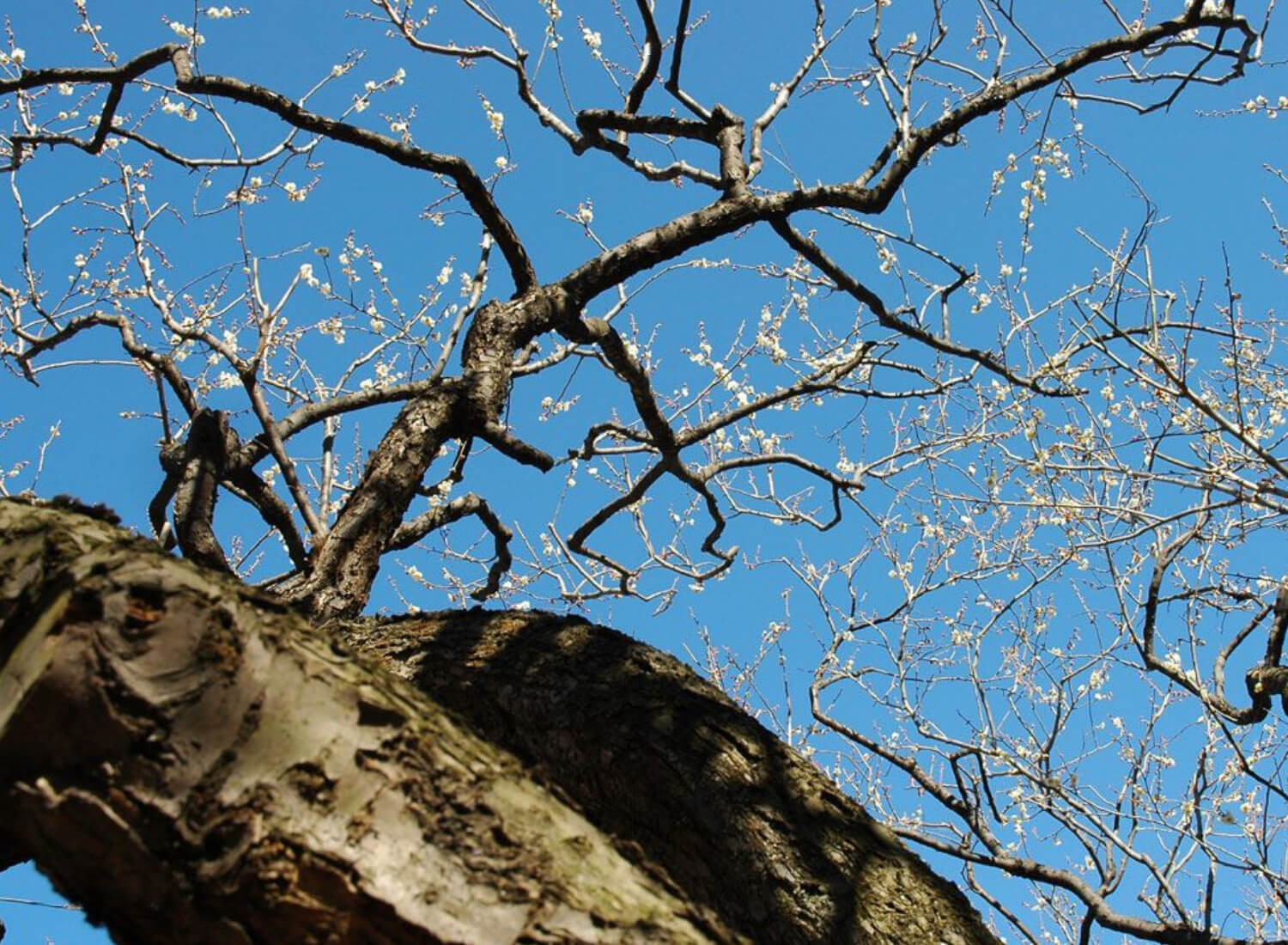
Source: Flickr
A tree battling a systemic disease is in a holistic struggle for survival. Its ability to absorb nutrients and water can be hampered, and its stored energy reserves may be rapidly depleted. Over time, the tree’s health can decline to the point of no return, leading to its death.
Disease transmission
Trees with systemic infections can become reservoirs of pathogens, which can then spread to other plants and trees. This transmission can occur through root grafts (natural connections between the roots of two trees), vectors like insects, or even environmental factors like wind and rain.
Management and control
Controlling systemic diseases is more complex than addressing localised infections. It often involves a combination of methods, including soil treatments, trunk injections, and preventive care practices. In some cases, removing the infected tree becomes necessary to prevent the disease from spreading to neighbouring trees.
Common tree diseases in Australia
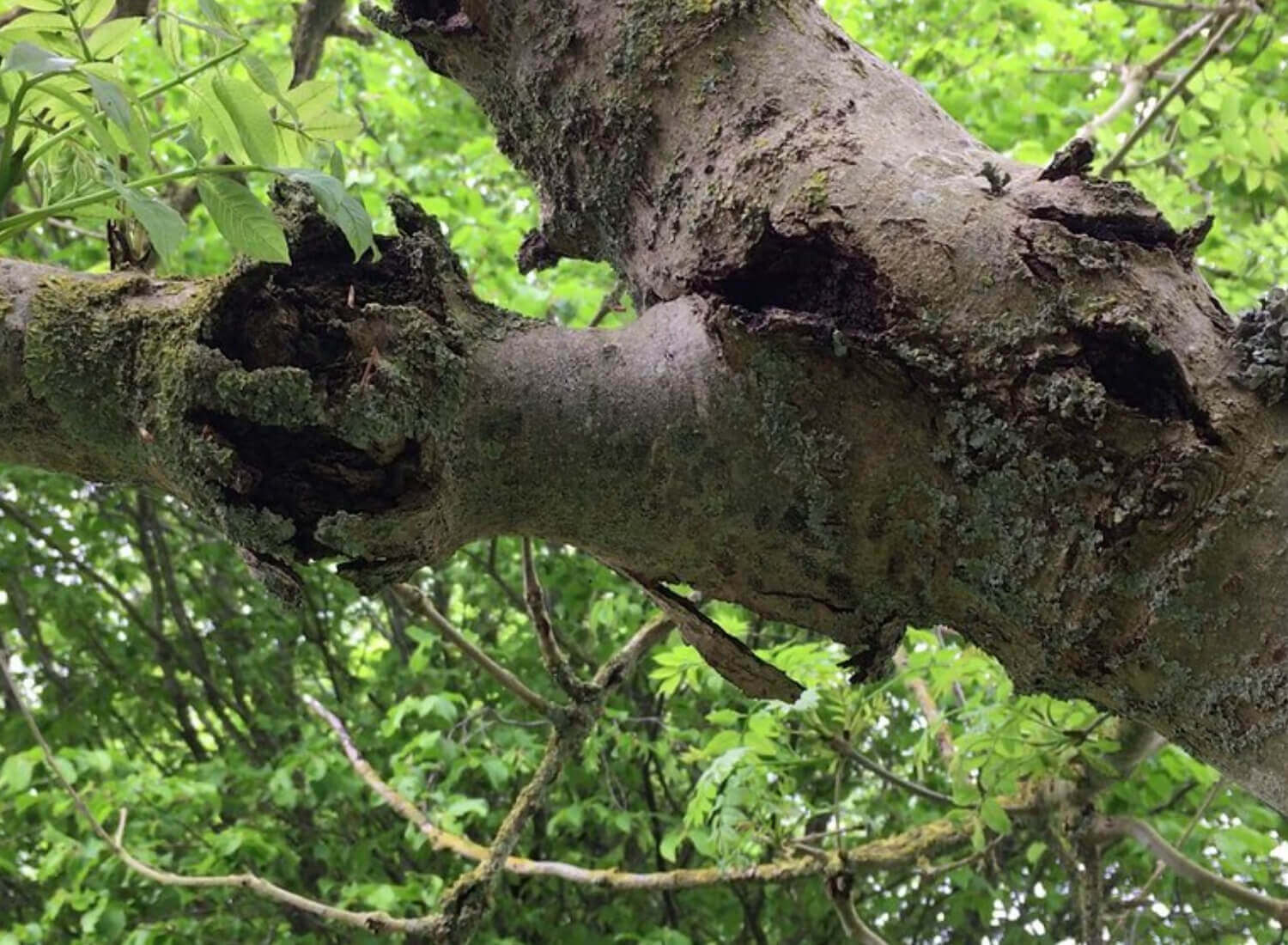
Source: Flickr
Australia is home to many tree species; unfortunately, many are susceptible to various diseases. Understanding the common tree diseases in Australia is crucial to maintaining the health of trees in your garden or park. Here are some of the most common tree diseases in Australia.
Cinnamon Fungus
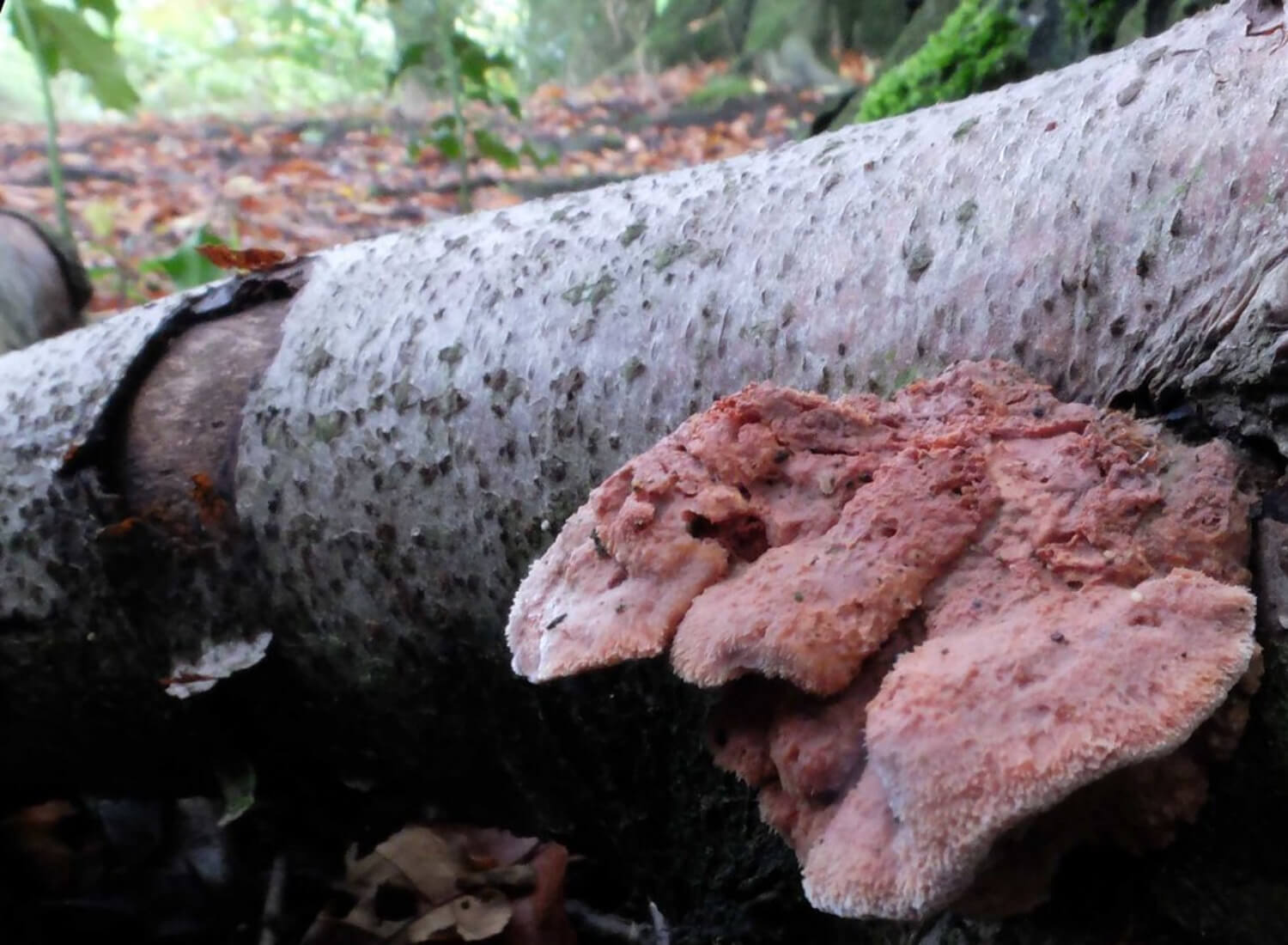
Source: Flickr
Cinnamon Fungus, also known as Phytophthora cinnamomi, is a soil-borne pathogen that attacks the root systems of many native Australian plants, including eucalypts, banksias, and acacias.
The fungus causes a condition known as Phytophthora Dieback, which can lead to the tree’s death. Symptoms include wilting, yellowing, leaf dropping, and a thinning canopy. The disease is most commonly spread through soil movement, either by human activity or water runoff.
Myrtle Rust
Myrtle Rust is a fungal disease affecting many plants, including eucalypts, paperbarks, and tea trees. The disease causes leaf deformities, yellowing, and premature dropping. It spreads through windborne spores and can be difficult to control. The disease was first detected in Australia in 2010 and has since spread to many parts of the country.
Phytophthora Dieback
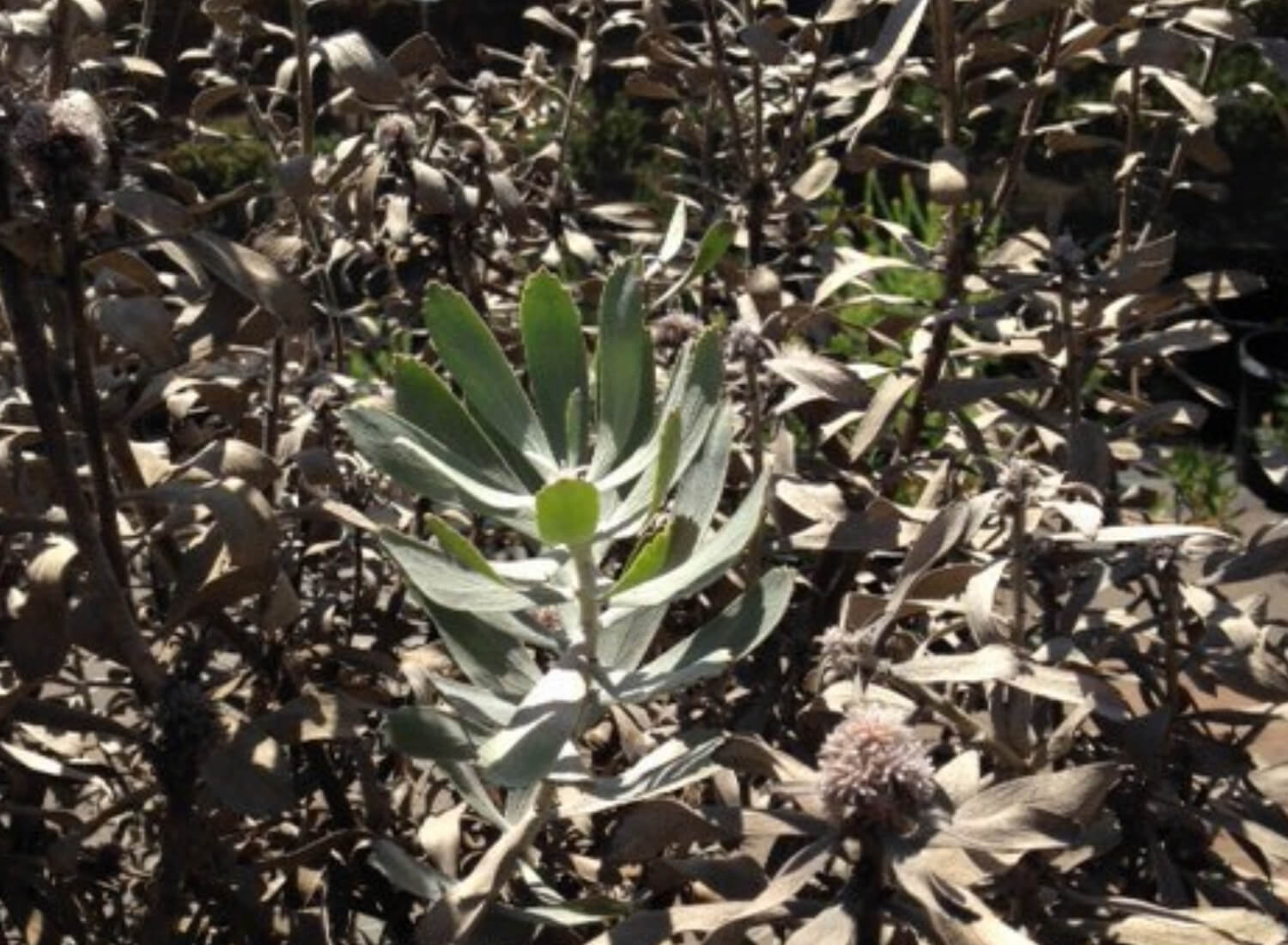
Source: Flickr
Phytophthora Dieback is a disease caused by a soil-borne pathogen that attacks the root systems of many native Australian plants, including banksias, sheoaks, and jarrah trees.
The disease causes wilting, yellowing, and dropping of leaves and a thinning canopy. It is most commonly spread through soil movement, either by human activity or water runoff.
Armillaria Root Rot
Armillaria Root Rot, also known as Shoestring Fungus, is a fungal disease that attacks the roots of many trees, including eucalypts, pines, and oaks. The disease causes the roots to rot, leading to declining tree health and eventual death.
Symptoms include wilting, yellowing, and dropping of leaves and a thinning canopy. The disease spreads through root contact and can persist in the soil for many years.
Eucalyptus Gall Wasp
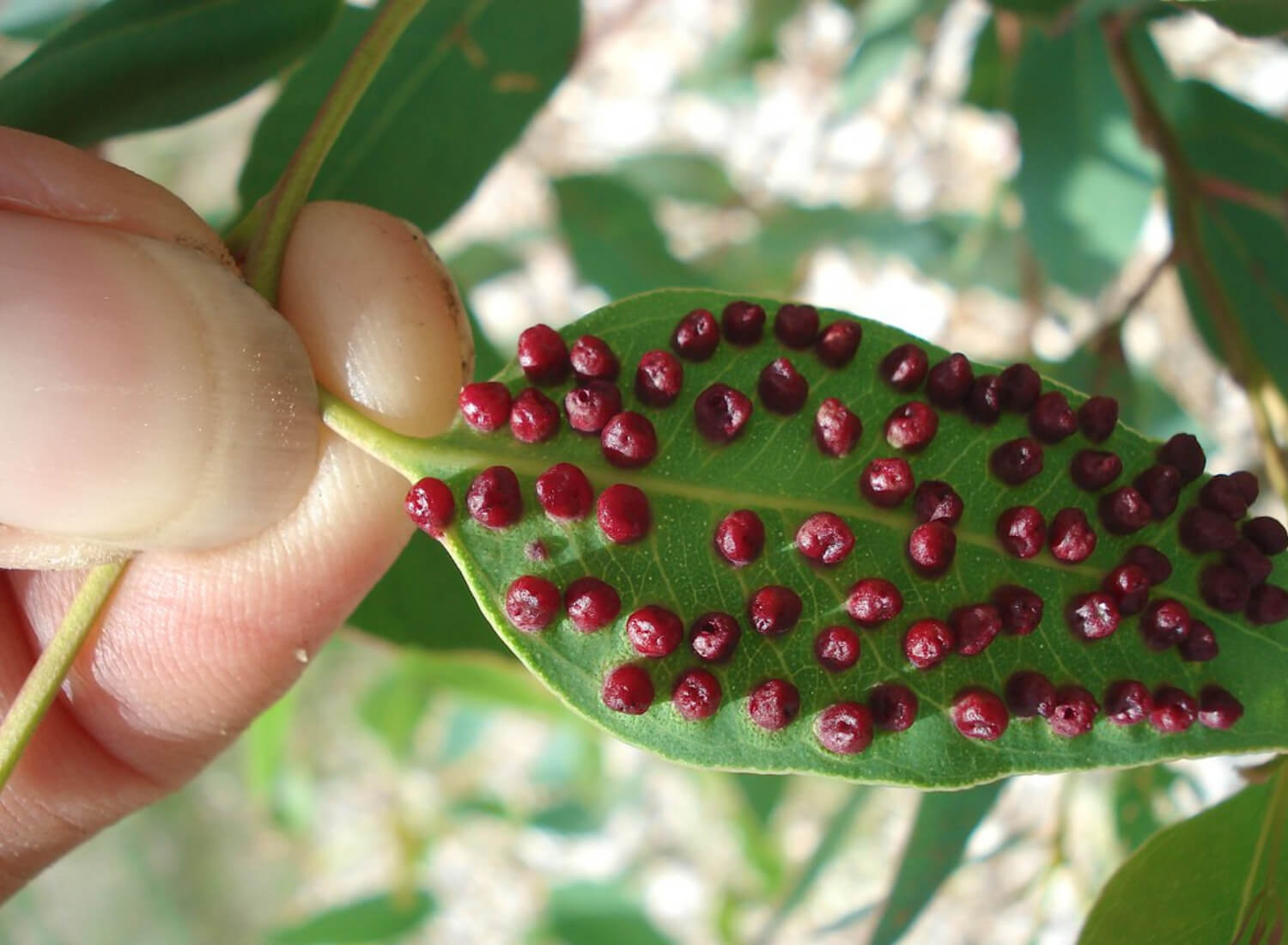
Source: Flickr
Eucalyptus Gallwasp is a pest that attacks the stems and branches of many eucalyptus species, causing the formation of galls or abnormal growths. The galls can weaken the tree and lead to branch breakage. The pest was first detected in Australia in 1999 and has since spread to many parts of the country.
Causes of tree diseases
Various factors can cause tree diseases in Australia. These factors can be broadly categorised into four main types: fungal infections, bacterial infections, viral infections, and environmental factors.
Fungal infections
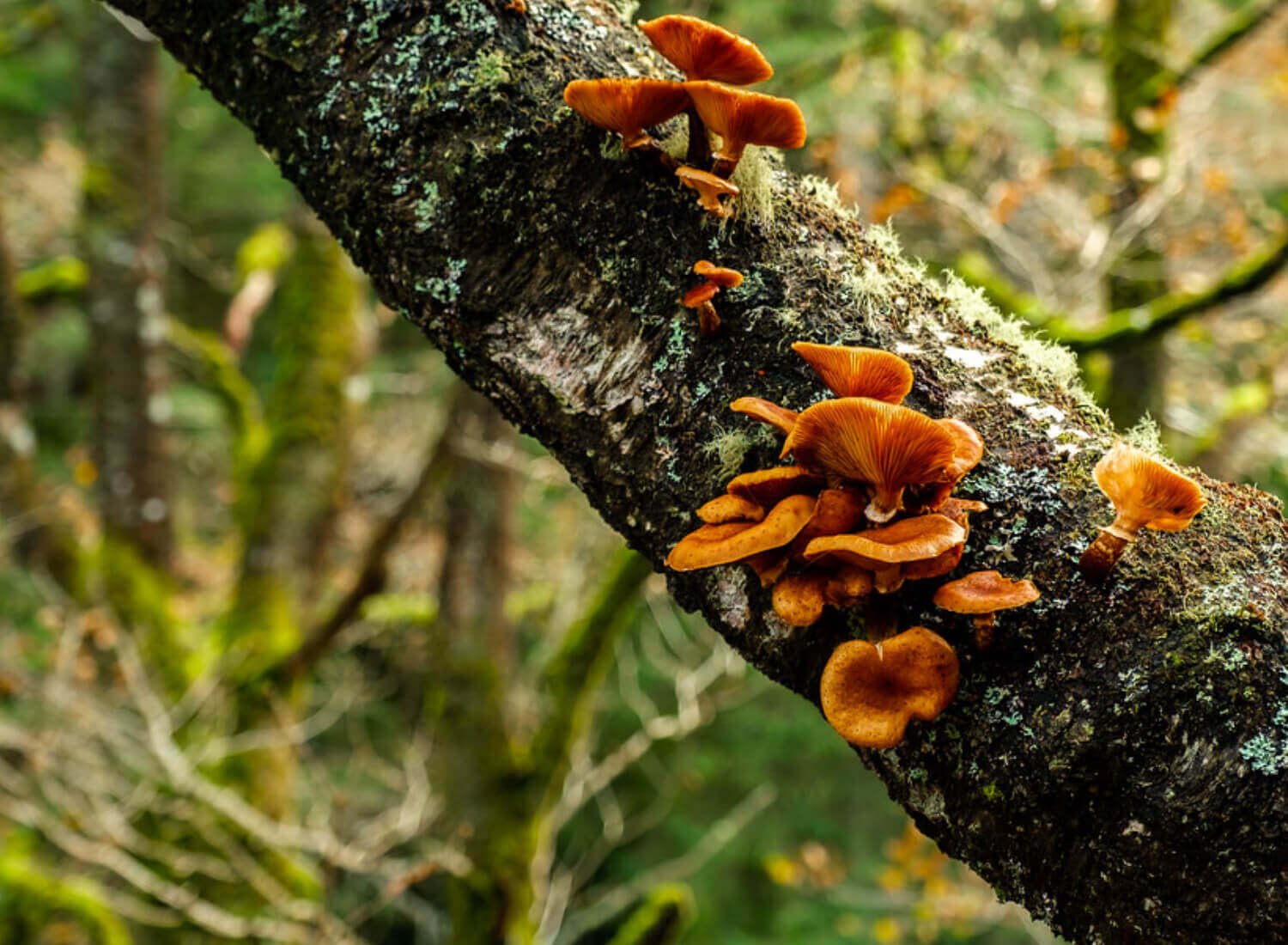
Source: Flickr
Fungal infections are one of Australia’s most common causes of tree diseases. These infections can be caused by various fungal pathogens such as P.cinnamomi, Pythium, Fusarium, Rhizoctonia, Phytophthora, or Armillaria.
Fungal infections can weaken the tree’s immune system and make it more susceptible to other diseases. Poor drainage that leads to oversaturated soil can also cause root rot, a serious disease that can kill a tree quickly.
Bacterial infections
Bacterial infections are another common cause of tree diseases in Australia. These infections can be caused by bacteria such as Pseudomonas syringae, Xanthomonas campestris, and Erwinia amylovora. Bacterial infections can cause leaf spots, cankers, and blights, weakening the tree and making it more susceptible to other diseases.
Viral infections
Viral infections are less common than fungal and bacterial infections but can still cause significant damage to trees in Australia. These infections can be caused by various viruses such as Apple mosaic virus, Cherry rasp leaf virus, and Grapevine fanleaf virus.
Viral infections can cause leaf mottling, stunted growth, and other symptoms that can weaken the tree and make it more susceptible to other diseases.
Environmental factors
Environmental factors such as drought, extreme temperatures, and pollution can also cause tree diseases in Australia. Drought can cause wilting and leaf drop, while extreme temperatures can cause leaf scorch and bark splitting. Pollution can weaken the tree’s immune system and make it more susceptible to other diseases.
Symptoms of tree diseases
Trees can suffer from various diseases caused by fungi, bacteria, and viruses. Some of the most common symptoms of tree diseases in Australia include:
Wilting leaves
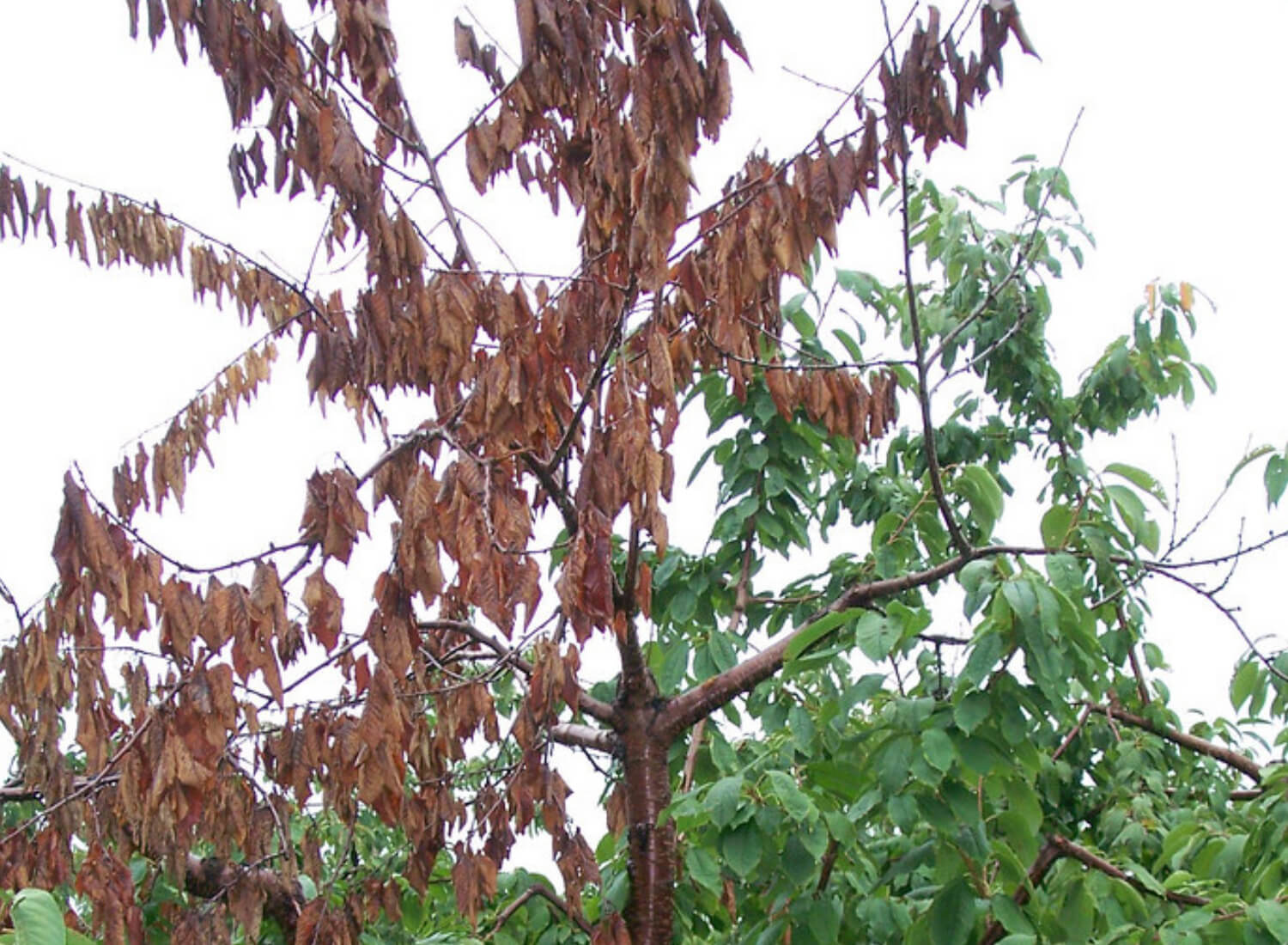
Source: Flickr
If the leaves of a tree start to wilt and droop, it could be a sign of a disease. A lack of water can cause wilting leaves and signify a fungal or bacterial infection. The leaves may turn yellow or brown and fall off the tree prematurely.
Discoloured or spotted leaves
Discoloured or spotted leaves can also be a sign of a disease. Fungal infections can cause brown or black spots on the leaves, while bacterial infections can cause yellow or red spots. In some cases, the leaves may become distorted or misshapen.
Cankers
Cankers are areas of dead tissue on the trunk or branches of a tree. Various diseases, including fungal infections and bacterial infections, can cause them. Cankers may appear as sunken areas on the bark and can cause the bark to crack and peel.
Dead branches
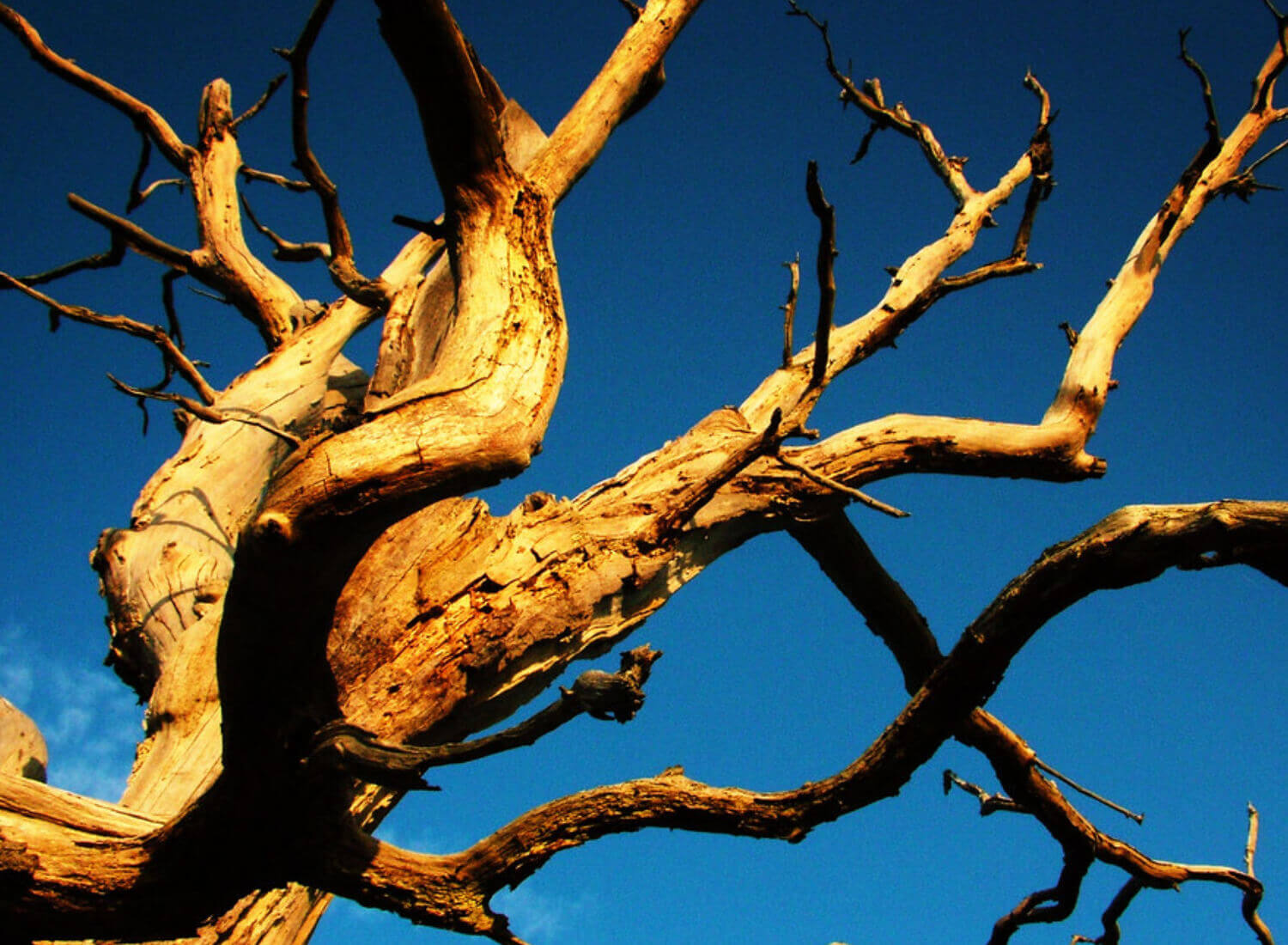
Source: Flickr
A tree with dead branches could be a sign of a disease. A lack of water or nutrients can cause dead branches and signify a fungal or bacterial infection. The branches may become brittle and may break off the tree easily.
Overall decline in tree health
In some cases, a tree may show signs of overall decline in health. The tree may produce fewer leaves or may have stunted growth. The bark may become discoloured or may peel off easily. These symptoms may be caused by a variety of diseases or by environmental stressors such as drought or pollution.
It is important to note that not all tree diseases are fatal, but it is crucial to address any symptoms of disease to prevent further damage or death of the tree. If a tree shows signs of disease, it is recommended to consult a qualified arborist to determine the best action.
Prevention and control of tree diseases
Proper tree care
One of the most effective ways to prevent tree diseases is to ensure proper care. This includes regular pruning and trimming to remove dead or diseased branches and keeping the tree well-watered and fertilised. It is also important to avoid damaging the tree’s roots or bark, as this can make it more vulnerable to disease.
Use of fungicides
In some cases, using fungicides may be necessary to control tree diseases. Fungicides work by killing or inhibiting the growth of fungi that cause disease. However, using fungicides properly and according to the manufacturer’s instructions is important, as overuse or misuse can lead to resistance and other problems.
Biosecurity measures
Another important aspect of preventing tree diseases is implementing biosecurity measures. This includes avoiding introducing new pests or diseases through the importation of plants or plant products and taking steps to prevent the spread of existing pests and diseases.
This can include quarantining infected trees, using clean tools and equipment, and avoiding the movement of potentially infected soil or plant material.
Impact of tree diseases on Australian ecosystem
Tree diseases have a significant impact on the Australian ecosystem, affecting the health of individual trees and the biodiversity and ecological balance of entire ecosystems. Below are some of how tree diseases impact the Australian environment:
Loss of biodiversity

Source: Flickr
Tree diseases can cause significant losses of biodiversity in Australian forests and woodlands. When a disease infects a tree species, it can wipe out entire populations of that species, reducing the number of species in the ecosystem. This can have a cascading effect on other species that rely on the affected tree species for food or shelter, leading to further declines in biodiversity.
Reduced carbon sequestration
Trees play an important role in carbon sequestration, absorbing carbon dioxide from the atmosphere and storing it in their biomass. When a tree is infected with a disease, it can reduce its ability to photosynthesize and store carbon, reducing the amount of carbon sequestered by the ecosystem.
This can have significant implications for climate change, as it can increase atmospheric carbon dioxide levels.
Economic impacts
Tree diseases can also have significant economic impacts, particularly in industries that rely on timber production or ecotourism. When a disease infects a tree species that is commercially valuable, it can lead to significant losses for the timber industry. Similarly, if a disease affects an ecosystem that is popular for ecotourism, it can lead to a reduction in tourism revenue.
Spread of disease
Finally, tree diseases can also spread to other parts of the ecosystem, infecting other tree species and causing further damage. This can be particularly problematic in areas where the ecosystem is already under stress from other factors, such as climate change or human development.
FAQ's
Australia is home to a wide variety of tree diseases. Some of Australia’s most common tree diseases include root rot, the decay of a plant’s root system, and can cause the leaves to become wilted, small, or discoloured.
Dutch elm disease is another common tree disease caused by a fungus and can cause wilting, yellowing, and curling of leaves and, ultimately, tree death. Other common tree diseases in Australia include Teratosphaeria disease, Eucalyptus rust, and Myrtle rust.
The yellow fungus on trees in Australia is likely to be a slime mould. Slime moulds are not true fungi but can grow on trees and other surfaces. They are usually harmless to the tree and do not require any treatment. The yellow colour is caused by pigments in the slime mould.
Whether or not a tree can recover from a disease depends on the severity of the disease and the age and health of the tree. Sometimes, a tree may recover from a disease with proper treatment and care. However, the disease may be too severe in other cases, and the tree may need to be removed to prevent it from spreading to other trees.
Australia is home to several common tree pests, including the eucalyptus longhorned borer, which can cause damage to the bark and wood of eucalyptus trees. The bronze birch borer is another common tree pest that can cause damage to birch trees.
Other common tree pests in Australia include the citrus gall wasp, which can cause galls to form on citrus trees, and the woolly aphid, which can cause damage to a wide variety of trees.
Teratosphaeria disease is a fungal disease that affects eucalyptus trees. It can cause leaf spots, stem cankers, and defoliation, ultimately leading to tree death. The disease is spread through spores and can be difficult to control once established.
Eucalyptus rust is a fungal disease that affects eucalyptus trees. It can cause leaf spots, defoliation, and cankers, ultimately leading to tree death. The disease is spread through spores and can be difficult to control once established.






